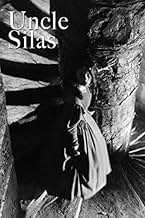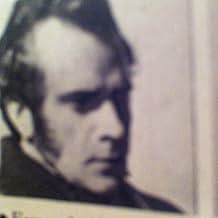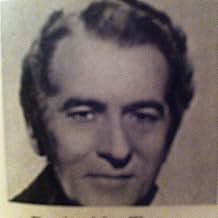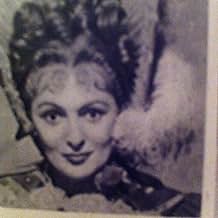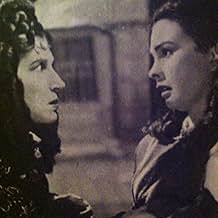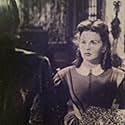Füge eine Handlung in deiner Sprache hinzuFollowing her father's death, a teenage British heiress goes to live with her guardian uncle--who is broke and schemes to murder her for her inheritance.Following her father's death, a teenage British heiress goes to live with her guardian uncle--who is broke and schemes to murder her for her inheritance.Following her father's death, a teenage British heiress goes to live with her guardian uncle--who is broke and schemes to murder her for her inheritance.
- Regie
- Drehbuch
- Hauptbesetzung
Empfohlene Bewertungen
Uncle Silas is directed by Charles Frank and adapted to screenplay by Ben Travers from the novel of the same name written by Sheridan Le Fanu. It stars Jean Simmons, Katina Paxinou, Derrick De Marney, Derek Bond, Sophie Stewart and Esmond Knight. Music is by Alan Rawstone and cinematography by Robert Krasker.
Upon the death of her loving father, teenager Caroline Ruthyn (Simmons) is bequeathed the family inheritance when she reaches the age of 21. In the interim she is requested to go live with her Uncle Silas (De Marney) in his ramshackle Gothic mansion. Silas was once considered unbalanced, even getting off with a murder charge when some felt he was guilty as sin, but now he seems warm towards Caroline. Is it a bluff? When Silas' weird son arrives on the scene and her fearsome former governess is found to be haunting the edges of the frames, Caroline suspects she may indeed be in danger.
A film dripping with Gothic delights, Uncle Silas is undeniably dated, as evidenced by the over acting that surrounds the excellent Simmons, but this is no Jamaica Inn. Atmosphere unbound here as Charles Frank and the brilliant Robert Krasker surround the nastiness of the plot with nightmarish visuals and scenes fit to grace any bigger budgeted horror of the decade.
The mansion is a classic fit for such a tale of heiress stalk and kill fare, though it is more run down than the opulence of something like Manderley. With 90% of the picture shot in dark and shadows, where light comes via candles and firesides, the mood of impending peril is always high. Add in a few stormy nights, mysterious rooms, locked gates and characters straight out of one of James Whale's dreams and you are good to go for bodice bedlam.
Director Charles Frank (co-writer The Late Edwina Black) had no career whatsoever, which on this evidence is baffling. OK! He wasn't able to rein in De Marney and Paxinou on this one, though in the case of the latter it's a glorious case where excess fits the nightmarish dream- scape, but some of his visual touches hint at what a good noir style director he could have been. With two nightmare sequences superb, one Brandy inspired and an array of canted angles and shadowy menaced frames filing out the piece, this shows superbly someone able to sustain foreboding atmosphere.
In some sources it is listed that Nigel Huke was co-cinematographer, but on others not so, and I certainly didn't see his name on the credits when the film rolled? But what we can see for sure is Krasker at his best. In the same year as Uncle Silas he would elevate Carol Reed's Odd Man Out to classic cinematography status, and two years later he would of course be an integral part of what made The Third Man the deservingly revered picture it is. Uncle Silas represents something of a must see for Krasker purists. It's also definitely a film that Simmons fans should seek out.
The over acting will irritate some, and the mid-point drags as it goes into gaiety mode and nearly derails the suspenseful mood that has been built up deftly. But it quickly overcomes this and gets back on track to be a cracker waiting to be gorged on by like minded film fans. It would make a nice appetiser to Ealing's brilliant Queen of Spades, or as B support to The Spiral Staircase. It was released as The Inheritance in the States, and had changes made, suffice to say that anyone interested in this movie should see only the British version. Maybe that was where Huke was involved? In the American cut? Oh well, Uncle Silas, Brit version, wonderfully kinked. 8/10
Upon the death of her loving father, teenager Caroline Ruthyn (Simmons) is bequeathed the family inheritance when she reaches the age of 21. In the interim she is requested to go live with her Uncle Silas (De Marney) in his ramshackle Gothic mansion. Silas was once considered unbalanced, even getting off with a murder charge when some felt he was guilty as sin, but now he seems warm towards Caroline. Is it a bluff? When Silas' weird son arrives on the scene and her fearsome former governess is found to be haunting the edges of the frames, Caroline suspects she may indeed be in danger.
A film dripping with Gothic delights, Uncle Silas is undeniably dated, as evidenced by the over acting that surrounds the excellent Simmons, but this is no Jamaica Inn. Atmosphere unbound here as Charles Frank and the brilliant Robert Krasker surround the nastiness of the plot with nightmarish visuals and scenes fit to grace any bigger budgeted horror of the decade.
The mansion is a classic fit for such a tale of heiress stalk and kill fare, though it is more run down than the opulence of something like Manderley. With 90% of the picture shot in dark and shadows, where light comes via candles and firesides, the mood of impending peril is always high. Add in a few stormy nights, mysterious rooms, locked gates and characters straight out of one of James Whale's dreams and you are good to go for bodice bedlam.
Director Charles Frank (co-writer The Late Edwina Black) had no career whatsoever, which on this evidence is baffling. OK! He wasn't able to rein in De Marney and Paxinou on this one, though in the case of the latter it's a glorious case where excess fits the nightmarish dream- scape, but some of his visual touches hint at what a good noir style director he could have been. With two nightmare sequences superb, one Brandy inspired and an array of canted angles and shadowy menaced frames filing out the piece, this shows superbly someone able to sustain foreboding atmosphere.
In some sources it is listed that Nigel Huke was co-cinematographer, but on others not so, and I certainly didn't see his name on the credits when the film rolled? But what we can see for sure is Krasker at his best. In the same year as Uncle Silas he would elevate Carol Reed's Odd Man Out to classic cinematography status, and two years later he would of course be an integral part of what made The Third Man the deservingly revered picture it is. Uncle Silas represents something of a must see for Krasker purists. It's also definitely a film that Simmons fans should seek out.
The over acting will irritate some, and the mid-point drags as it goes into gaiety mode and nearly derails the suspenseful mood that has been built up deftly. But it quickly overcomes this and gets back on track to be a cracker waiting to be gorged on by like minded film fans. It would make a nice appetiser to Ealing's brilliant Queen of Spades, or as B support to The Spiral Staircase. It was released as The Inheritance in the States, and had changes made, suffice to say that anyone interested in this movie should see only the British version. Maybe that was where Huke was involved? In the American cut? Oh well, Uncle Silas, Brit version, wonderfully kinked. 8/10
The thing that I like about Uncle Silas a.k.a. The Inheritance is that it is not your average thriller. The suspense is built slowly as we see things that affect the life of the heroine, but she is not aware of them yet. The movie builds up more and more and it becomes an exciting suspense movie that packs a punch even for its time. Jean Simmons is practically a child in this movie, she was so young and beautiful as always. Great acting and gloomy characters make this a fun movie to watch on a stormy night. Lovers of old Gothic tales and suspense movies will not be disappointed.
This moody version of Joseph Sheridan Le Fanu's classic Gothic novel is quite simply one of the most accomplished British films of the 1940's.
With cinematography reminiscent of (and rivaling)that seen in David Lean's "Great Expectations," it is a pity that this picture is not better known.
This may accrue from the fact that an American, heavily edited, and re-titled version ("The Inheritance") is the only print in U.S. circulation.
At all costs avoid this butcher job, as the 6 minutes of missing footage are very germane to the story's narrative, mood and imagery.
Jean Simmons is a reminder of yet another lost dramatic staple--a decorous, demure heroine, who speaks in complete sentences with flawless diction. Her lady like deportment combined with her unquestioned loveliness makes her a very sympathetic Lady Caroline. Mr. De Marney is similarly impressive as the sinister, titular character.
But the film belongs to Katina Paxinou as the redoubtable Madame De La Rougierre. I believe Mr. Le Fanu would approve of her performance. In any case, her first appearance, as depicted with her malignant face peering through a rain lashed window pane, is as startling an entrance as one could hope for.
Laurence Irving's art direction is superb, (and some of his sketches for this film are included in Edward Carrick's "Art and Design in the British Film," Dennis Dobson, London) fully realizing, as it does, the stories' atmospheric requirements, and amply demonstrating how superior sound stages are to location shooting.
All told, this picture stands favorably alongside Thorold Dickinson's "Queen of Spades," Terence Young's "Corridor of Mirrors," Anthony Pelissier's "Rocking Horse Winner," Leslie Arliss' "Night Has Eyes," Jacques Tourneur's "Experiment Perilous," and Martin Gabel's "The Lost Moment," as one of a small group of visually distinguished Gothic melodramas of the 1940's, and far superior to the more recent television version, which despite the welcome presence of Peter O'Toole and Barbara Shelley lacks both flavor and mood.
With cinematography reminiscent of (and rivaling)that seen in David Lean's "Great Expectations," it is a pity that this picture is not better known.
This may accrue from the fact that an American, heavily edited, and re-titled version ("The Inheritance") is the only print in U.S. circulation.
At all costs avoid this butcher job, as the 6 minutes of missing footage are very germane to the story's narrative, mood and imagery.
Jean Simmons is a reminder of yet another lost dramatic staple--a decorous, demure heroine, who speaks in complete sentences with flawless diction. Her lady like deportment combined with her unquestioned loveliness makes her a very sympathetic Lady Caroline. Mr. De Marney is similarly impressive as the sinister, titular character.
But the film belongs to Katina Paxinou as the redoubtable Madame De La Rougierre. I believe Mr. Le Fanu would approve of her performance. In any case, her first appearance, as depicted with her malignant face peering through a rain lashed window pane, is as startling an entrance as one could hope for.
Laurence Irving's art direction is superb, (and some of his sketches for this film are included in Edward Carrick's "Art and Design in the British Film," Dennis Dobson, London) fully realizing, as it does, the stories' atmospheric requirements, and amply demonstrating how superior sound stages are to location shooting.
All told, this picture stands favorably alongside Thorold Dickinson's "Queen of Spades," Terence Young's "Corridor of Mirrors," Anthony Pelissier's "Rocking Horse Winner," Leslie Arliss' "Night Has Eyes," Jacques Tourneur's "Experiment Perilous," and Martin Gabel's "The Lost Moment," as one of a small group of visually distinguished Gothic melodramas of the 1940's, and far superior to the more recent television version, which despite the welcome presence of Peter O'Toole and Barbara Shelley lacks both flavor and mood.
I read in other user comments above that several U.S. viewers have only been able to see "Uncle Silas"(1947) in the inferior and censored title of "The Inheritance".Like the original "The Wicked Lady" 1945 which had to be re-shot minus décolletage, this was released at a time in America of great prudery.I am happy to report to my said U.S.brethren that the original U.K. version is available from www.myrarefilms.co.uk for which I paid £5 or about $7 + postage in your currency.In this more liberal climate I hate films being censored, after all, I am 69,so purchase a copy of the original rather than watch an inferior copy.
Jean Simmons was born in 1929 so when asked her age (16) in "Uncle Silas" she is nearly telling her real age of 18 and very young fresh & lovely she looks.Full marks to the set & dress designers to show clothes worn by ladies in 1845.Derek de Marney for once plays a villain as Uncle Silas compared to say "Young & Innocent" (1937) directed by Hitchcock, when he played the hero wrongly accused of murdering a lady associate found strangled on a beach.Other reviewers have adequately explained the plot above but do make an effort to see this film if you like Gothic horror.
Jean Simmons was born in 1929 so when asked her age (16) in "Uncle Silas" she is nearly telling her real age of 18 and very young fresh & lovely she looks.Full marks to the set & dress designers to show clothes worn by ladies in 1845.Derek de Marney for once plays a villain as Uncle Silas compared to say "Young & Innocent" (1937) directed by Hitchcock, when he played the hero wrongly accused of murdering a lady associate found strangled on a beach.Other reviewers have adequately explained the plot above but do make an effort to see this film if you like Gothic horror.
Historical melodrama ("The Man in Grey", "The Wicked Lady", "Jassy", "Blanche Fury") was a popular genre in the British cinema of the forties, and "Uncle Silas", based upon a novel by Sheridan Le Fanu, is another example. (These films had their equivalents in the American cinema, such as "Dragonwyck"). The action takes place in the mid 19th century. The heroine, Caroline Ruthyn is a sixteen-year-old heiress. When her widowed father dies, his will appoints his younger brother Silas as her guardian. In his youth Silas had a reputation as a rake, but now everyone believes him to be a reformed character. The truth, however, is that he has only abandoned his debauched lifestyle because of failing health and dwindling finances, not because of a genuine change of heart. He greets Caroline warmly, but his affection for her is only feigned, and he is secretly plotting to get his hands on her fortune.
Some melodramas from this period, such as "Jassy" and "Blanche Fury", were made in colour, and can be seen as predecessors of the more recent "heritage cinema" movement. "Uncle Silas", however, was made in black-and-white, possibly to emphasise the Gothic elements of the story. It mostly lacks the element of bodice-ripping sexual passion which is strongly implied, if not always made explicit, in films like "The Man in Grey" or "The Wicked Lady". The only character who is chiefly motivated by sexual desire is Silas's dissolute son Dudley and his passion, for his cousin Caroline, is not returned. (Far from it. Caroline loathes Dudley and has no illusions about his true nature, even though she is still under an illusion about the true nature of his father Silas).
There are certain similarities between this film and the American-made "Dragonwyck", made the previous year. Both were set at around the same period in history and both feature a beautiful, innocent brunette heroine (Jean Simmons here, Gene Tierney in "Dragonwyck") who goes to live with a sinister relative in a gloomy Gothic mansion. There is an obvious contrast between the spacious, airy Georgian stately home which Caroline inherits from her father and Silas's ramshackle, tumbledown mediaeval or Tudor manor house. (As an impoverished younger son, he presumably cannot afford anything more commodious). At first the girl is deceived as to her relative's character- in "Dragonwyck" the heroine, Miranda, even goes so far as to marry her distant cousin Nicholas- but his true nature eventually emerges and she finds herself in danger.
The difference between this film and "Dragonwyck" lies in the way it is acted. As another reviewer has pointed out the good characters- Caroline, her father and her admirer Lord Richard Ilbury- are all played straight, whereas the evil ones- Silas, Dudley and their sidekick, Caroline's former governess, Madame de la Rougierre- are all to some extent melodramatic caricatures. The main villain in "Dragonwyck", Nicholas, is not caricatured in this way. Katina Paxinou as Madame de la Rougierre perhaps goes too far over the top, and Dudley, whose role is not a large one, is a sort of bargain-basement Squire Jasper. Derrick De Marney, however, makes a splendid villain as Silas. He was only in his early forties in 1947, but looks much older, and it is difficult to believe that he is the same man who had played the handsome young male lead in Hitchcock's "Young and Innocent" only a decade earlier. On the virtuous side, Simmons makes a luminously lovely heroine, and there is a good performance from Reginald Tate as Caroline's father Austin. The devoutly Christian Austin Ruthyn is a good man, but suffers from a character defect common among good people- he is so noble and upright that he cannot understand, or even conceive of the existence of, anyone who is less noble and upright than himself.
Today, melodramas like this one can come across as dated, with their exaggerated emotion and exaggeratedly black-and-white view of the world, represented here by the contrast between the good and the evil characters. Barbara and the saintly Caroline. Yet to anyone prepared to make allowances for the differences between contemporary tastes and those of seventy years ago, a film like "Uncle Silas" can be seen as a fine example of a once-fashionable style of film-making. 7/10.
Some melodramas from this period, such as "Jassy" and "Blanche Fury", were made in colour, and can be seen as predecessors of the more recent "heritage cinema" movement. "Uncle Silas", however, was made in black-and-white, possibly to emphasise the Gothic elements of the story. It mostly lacks the element of bodice-ripping sexual passion which is strongly implied, if not always made explicit, in films like "The Man in Grey" or "The Wicked Lady". The only character who is chiefly motivated by sexual desire is Silas's dissolute son Dudley and his passion, for his cousin Caroline, is not returned. (Far from it. Caroline loathes Dudley and has no illusions about his true nature, even though she is still under an illusion about the true nature of his father Silas).
There are certain similarities between this film and the American-made "Dragonwyck", made the previous year. Both were set at around the same period in history and both feature a beautiful, innocent brunette heroine (Jean Simmons here, Gene Tierney in "Dragonwyck") who goes to live with a sinister relative in a gloomy Gothic mansion. There is an obvious contrast between the spacious, airy Georgian stately home which Caroline inherits from her father and Silas's ramshackle, tumbledown mediaeval or Tudor manor house. (As an impoverished younger son, he presumably cannot afford anything more commodious). At first the girl is deceived as to her relative's character- in "Dragonwyck" the heroine, Miranda, even goes so far as to marry her distant cousin Nicholas- but his true nature eventually emerges and she finds herself in danger.
The difference between this film and "Dragonwyck" lies in the way it is acted. As another reviewer has pointed out the good characters- Caroline, her father and her admirer Lord Richard Ilbury- are all played straight, whereas the evil ones- Silas, Dudley and their sidekick, Caroline's former governess, Madame de la Rougierre- are all to some extent melodramatic caricatures. The main villain in "Dragonwyck", Nicholas, is not caricatured in this way. Katina Paxinou as Madame de la Rougierre perhaps goes too far over the top, and Dudley, whose role is not a large one, is a sort of bargain-basement Squire Jasper. Derrick De Marney, however, makes a splendid villain as Silas. He was only in his early forties in 1947, but looks much older, and it is difficult to believe that he is the same man who had played the handsome young male lead in Hitchcock's "Young and Innocent" only a decade earlier. On the virtuous side, Simmons makes a luminously lovely heroine, and there is a good performance from Reginald Tate as Caroline's father Austin. The devoutly Christian Austin Ruthyn is a good man, but suffers from a character defect common among good people- he is so noble and upright that he cannot understand, or even conceive of the existence of, anyone who is less noble and upright than himself.
Today, melodramas like this one can come across as dated, with their exaggerated emotion and exaggeratedly black-and-white view of the world, represented here by the contrast between the good and the evil characters. Barbara and the saintly Caroline. Yet to anyone prepared to make allowances for the differences between contemporary tastes and those of seventy years ago, a film like "Uncle Silas" can be seen as a fine example of a once-fashionable style of film-making. 7/10.
Wusstest du schon
- WissenswertesThis film's earliest documented US telecast took place in Los Angeles Monday 3/27/50, leading off Triple Feature Theatre on KECA (Channel 7), hosted by Art Baker.
- PatzerThe length of Jean Simmons' ringlets change from one shot to the other.
- Zitate
Uncle Silas Ruthyn: And here you are! One of my hopes fulfilled.
- Alternative VersionenThe American release, under the title, "The Inheritance" is six minutes shorter than the original British version, titled "Uncle Silas," after the film's source novel.
- VerbindungenVersion of El misterioso tío Sylas (1947)
- SoundtracksMy Hat, It Has Three Corners
(uncredited)
American traditional song
Played in the background during the scene in the London hotel.
Top-Auswahl
Melde dich zum Bewerten an und greife auf die Watchlist für personalisierte Empfehlungen zu.
Details
Box Office
- Budget
- 1.000.000 $ (geschätzt)
- Laufzeit
- 1 Std. 43 Min.(103 min)
- Farbe
- Seitenverhältnis
- 1.37 : 1
Zu dieser Seite beitragen
Bearbeitung vorschlagen oder fehlenden Inhalt hinzufügen

